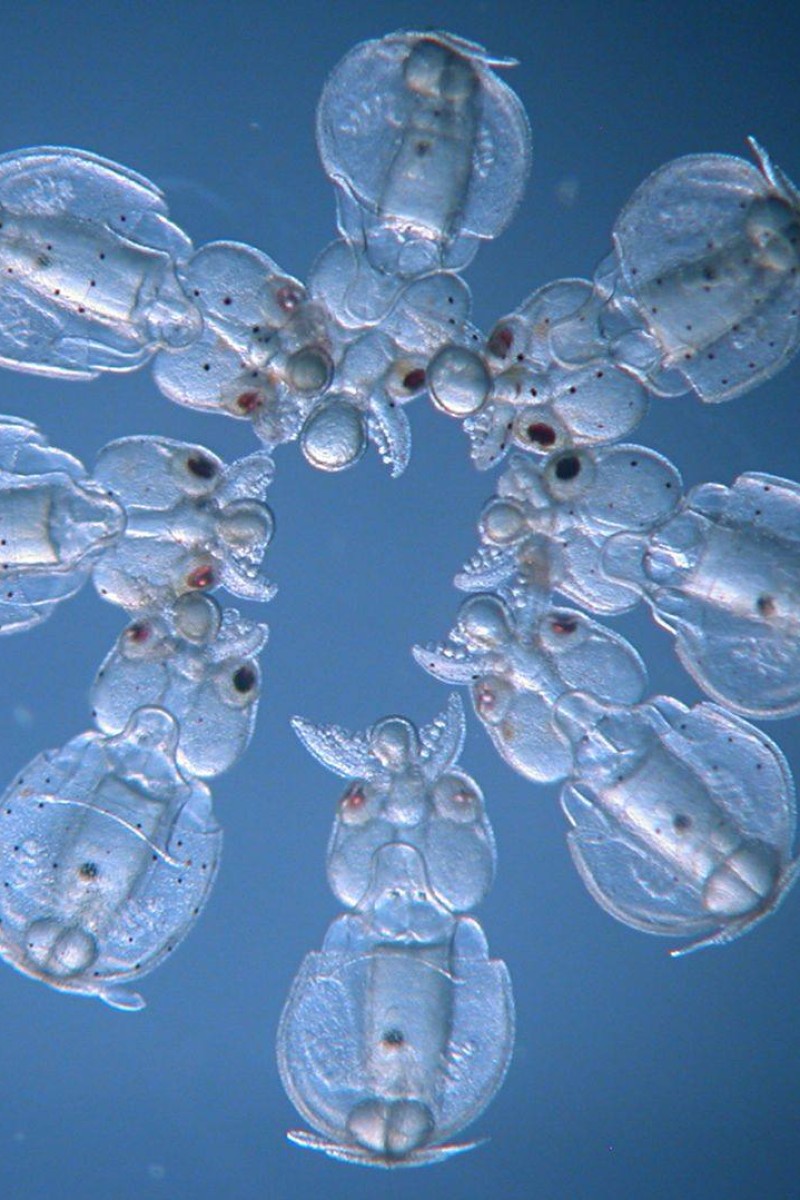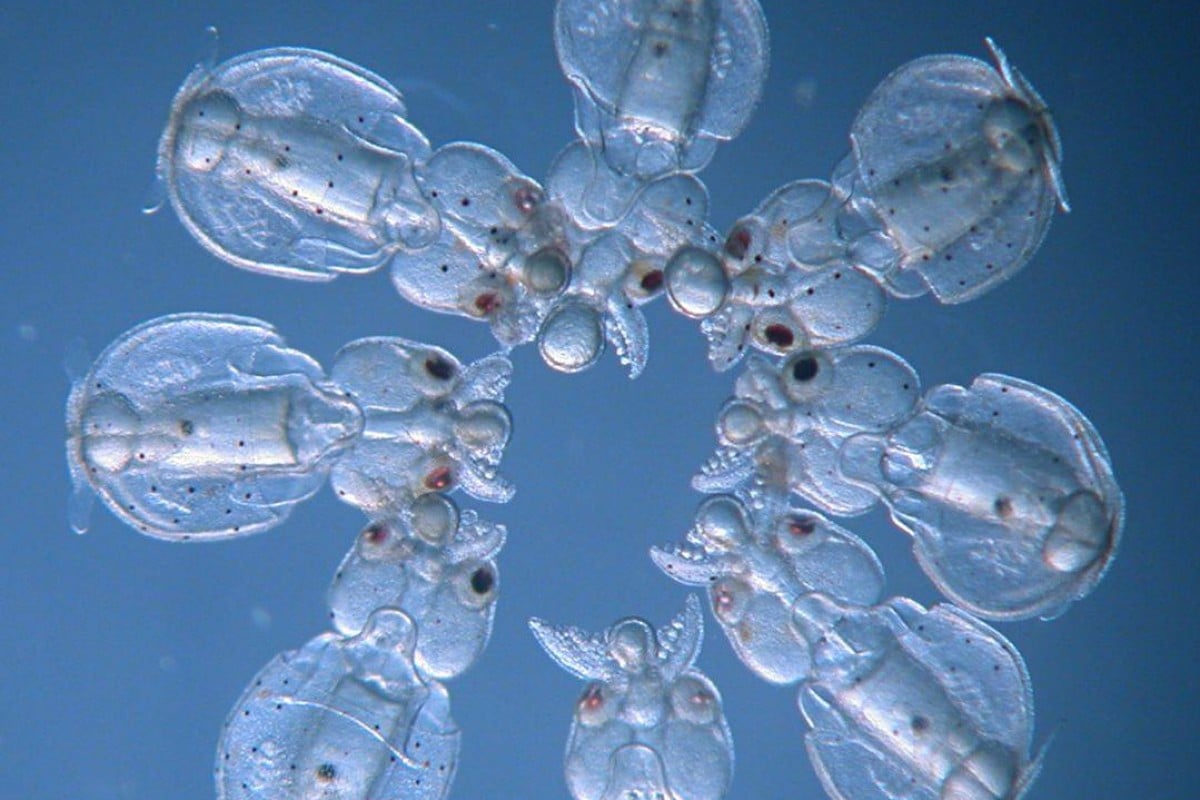
Your Voice: Pros and cons of gene-editing; the perils of using AI in YouTube videos (long letters)
- One reader shares that CRISPR, a revolutionary technology that enables scientists to make precise modifications to our DNA
- Another reader shares that it is essential to issue warnings on artificial intelligence-generated content on YouTube
 CRISPR is a revolutionary technology that enables scientists to make precise modifications to our DNA. Photo: Handout
CRISPR is a revolutionary technology that enables scientists to make precise modifications to our DNA. Photo: HandoutHave something to say? Send us a letter using this Google form.
Gene-editing technology: pros and cons
Annabel Leung (German Swiss International School) and Gabriella Yeung (Singapore American School)
CRISPR (Clustered Regularly Interspaced Short Palindromic Repeats) is a revolutionary gene-editing technology. It allows scientists to make precise modifications to our DNA, with potential in medical, environmental, and biological fields. With CRISPR, we might be able to treat genetic disorders and create disease-resistant crops. So, how does CRISPR work, and what are the implications of such robust technology?
CRISPR is a natural process found initially in E coli bacteria. Recent developments have revealed several functions for CRISPR, one of which is to fix genetic mutations. Using CRISPR, scientists can target and modify the damaged DNA sequence to restore normal gene function.
CRISPR can be used to treat sickle cell anaemia, the most common blood disease in the United States. Affected individuals inherit two copies of the mutated gene beta-globin (HBB), and as a result, haemoglobin production in patients plummets. First, a piece of RNA is created to match a specific DNA sequence called the guide RNA. It then binds with the Cas9 protein, which functions as a pair of scissors, cutting the DNA at a precise place. After cutting the DNA, the cell’s natural mechanisms kick in, and scientists can now add, remove, or replace specific genetic portions.
Using CRISPR, scientists can target and modify the damaged DNA sequence to restore normal gene function.
With the approval of CRISPR-based gene editing therapy in December 2023, researchers are able to use CRISPR to promote and restore unstable haemoglobin levels, an essential protein in delivering oxygen throughout the body for respiration to make energy. Using CRISPR, scientists induce a break in the beta-globin gene and introduce a donor template containing the typical gene sequence. In doing so, cells are able to naturally correct the mutation while repairing the DNA break.
Decoding the ethics of genetic engineering
CRISPR can also aid in developing new cancer treatments that modify a patient’s cells to be more effective in eliminating cancerous cells.
The ability of CRISPR to make genetically engineered organisms may be its most intriguing function. The offspring of genetically modified embryos intended to alter specific traits are known as designer babies. Therefore CRISPR presents a number of ethical issues and concerns regarding the boundaries of genetic technology.
The possibility of dividing society according to who has access to CRISPR is one of the main issues. If only the wealthy could afford it, those who couldn’t would be at a disadvantage, widening the divide between the two groups.
The unpredictable nature of such technology is another issue. There is a chance of unforeseen side effects for the individuals involved because the long-term implications of changing genes have not been extensively studied.
And lastly, consent raises a number of ethical concerns. There is a lot of controversy around the idea that parents can “design” their children, and those who will be affected have no input at all. Furthermore, parents want to provide their kids with the greatest genetic advantages according to social ideals. This puts pressure on the parents and limits the definition of what is deemed most “perfect”.
The perils of AI
Janice Wong Tsz-kiu, St Paul’s Secondary School
I am writing in response to the article “YouTube creators will soon have to disclose the use of gen AI in videos or risk suspension,” published on your website on November 16, 2023. The article discusses the implementation of warnings on artificial intelligence-generated content on YouTube. I, too, believe that it is crucial to protect the YouTube community, and therefore, this policy should be seriously considered.
First and foremost, the policy is vital to mitigate the potential for misinformation and deception. As deepfake AI technology becomes increasingly popular and advanced, there is a growing risk of misleading content being shared online.
For example, in March 2023, deepfake videos and images depicting the arrest of former president Donald Trump in New York went viral across various social media platforms. The features and facial expressions of the “fake” Trump were remarkably similar to the real one, leading many to believe that the arrest had actually taken place. These videos spread rapidly, leading to further misinformation and confusion. If there had been warnings indicating that the videos were generated by AI, fewer people would have been misled, and Donald Trump would not have needed to address the issue to clarify the truth.
Furthermore, implementing warnings on AI-generated content can help safeguard the interests of artists. For instance, an emerging artist, who goes by Trent Reinvent, used AI to create a song that appears to feature an AI version of Kanye West, one of the most well-known rappers of all time. This is used to promote the new song, aiming to increase its popularity.
However, if Kanye West’s voice is manipulated to sing sensitive or inappropriate lyrics related to politics or religion, this could potentially damage his reputation.
This problem can be mitigated by setting warnings for AI-generated content, which would remind viewers that the content is fake and that Kanye West did not actually sing the song. This way, artists would be protected from false accusations of spreading inappropriate content on YouTube, and their interests would be safeguarded.
Last but not least, implementing warnings about AI-generated content can raise awareness among parents regarding the presence of such content on YouTube. According to a survey conducted by the Pew Research Centre, 81 per cent of parents with children aged 11 or younger stated that their children watch videos on YouTube. With alerts about AI-generated content, parents can pay closer attention to these videos and educate their children about the possibility of fake content.
Children will inevitably watch YouTube videos alone, and by providing warnings, they will understand that exaggerated or dangerous content may not be accurate. This will reduce the likelihood of them imitating dangerous actions and will help prevent accidents.
In conclusion, the YouTube policy of setting warnings for videos that include AI-generated content can benefit various stakeholders. This will create a safer environment online.
